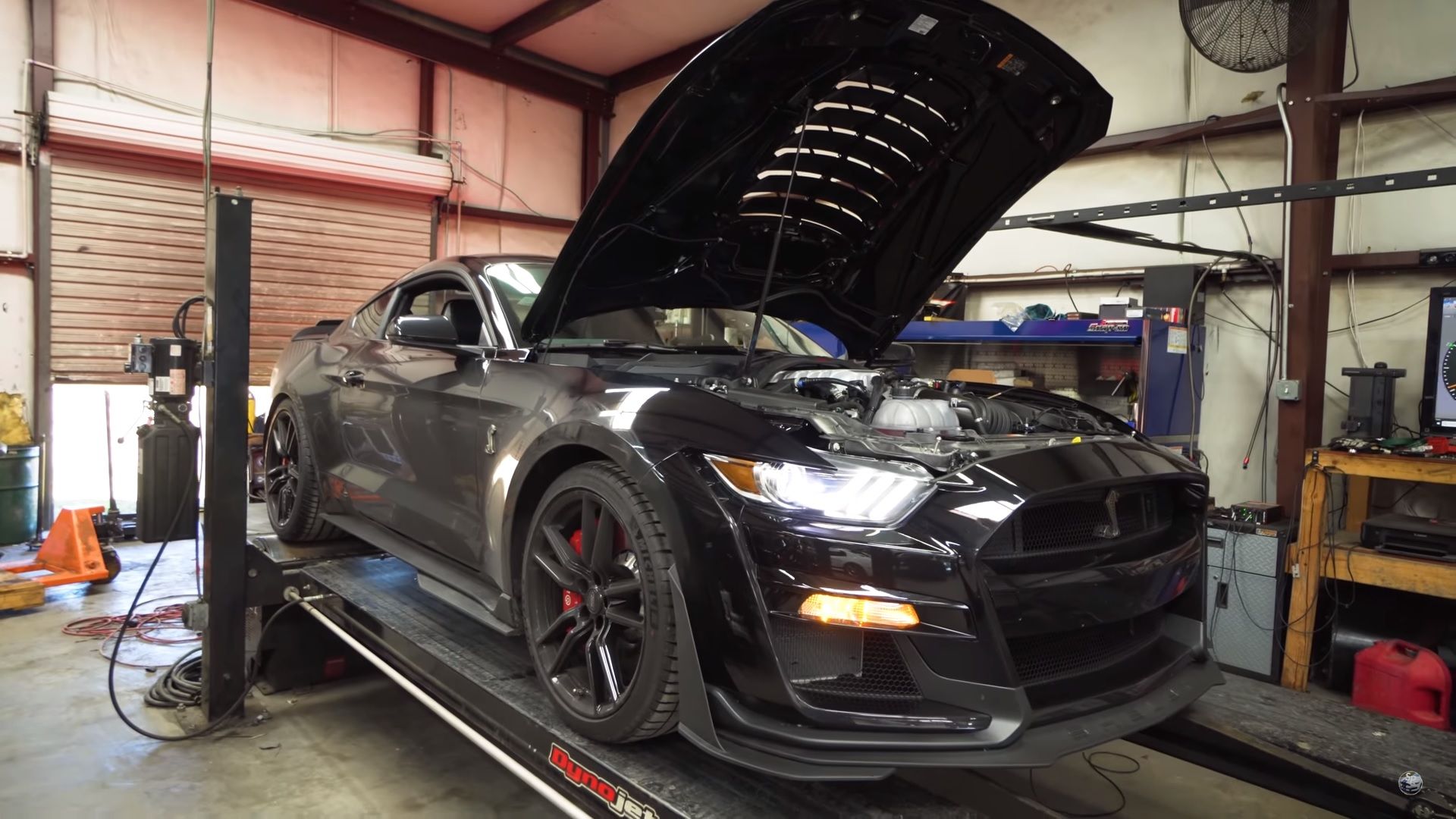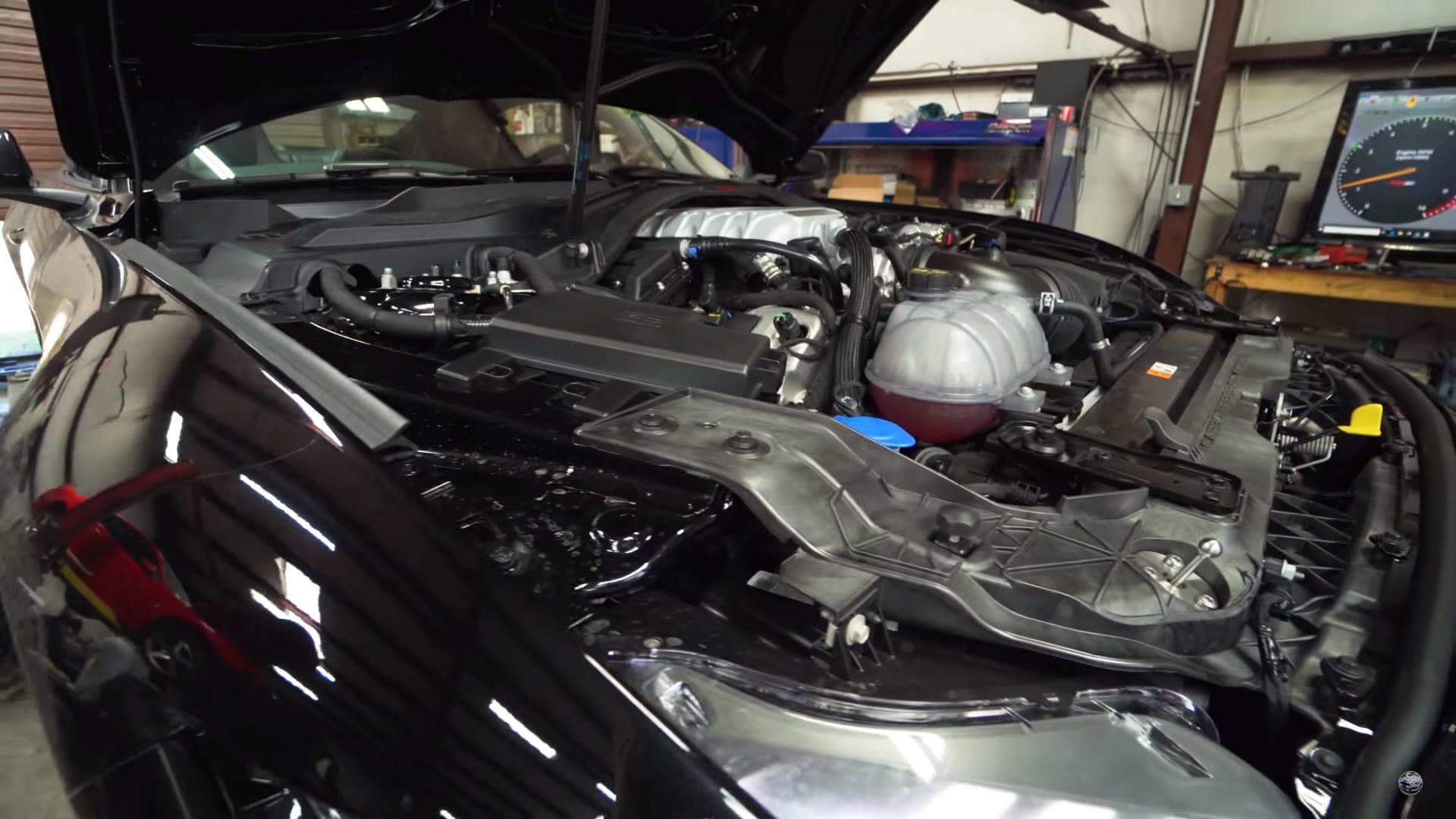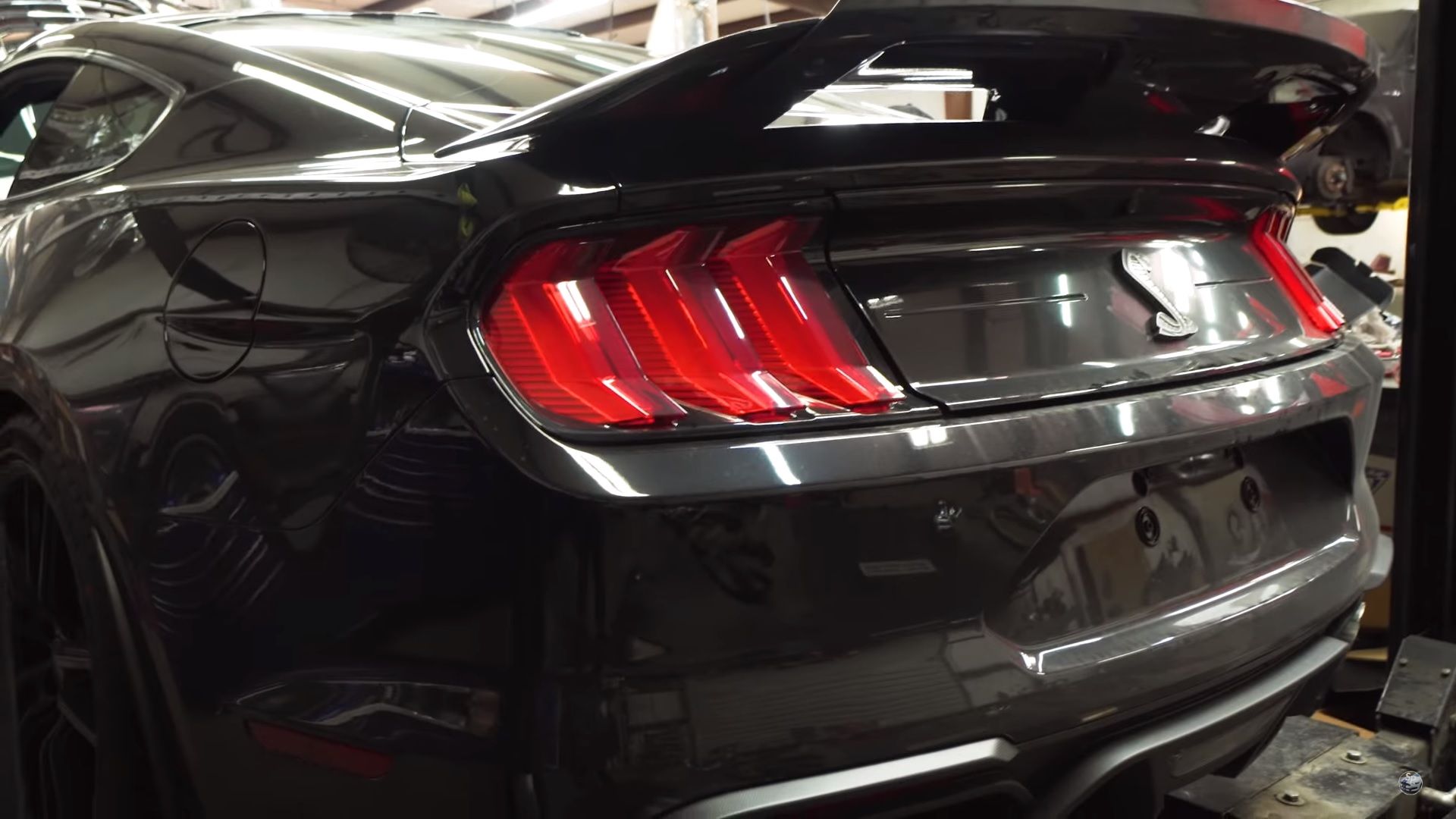It’s becoming a common trend to take new performance cars, slap them on a dyno, and see just how well the performance numbers stack up to automaker claims. We saw it with the Toyota Supra, and it proved to be way more powerful, even in a separate testing session. We saw it when Motor Trend Dynoed the C8 Corvette, and now we’re seeing it with the 2020 Ford Mustang Shelby GT500. So, does the GT500 really produce the claimed 760 horsepower, does it fall short, or is Ford and Shelby sandbagging on official specs?
2020 Ford Mustang Shelby GT500 Dyno Test
The 2020 Ford Mustang Shelby GT500 is powered by a 5.2-liter, supercharged, V-8 that Ford claims is good for 760 Horsepower and 625 pound-feet of torque. It’s also capable of hitting 180 mph, which is 22 mph short of the 2013 GT500 but it’s also nearly 400 pounds heavier, so it’s a give and take situation. But that’s neither here nor there – the real question is whether or not Ford’s now legendary supercharged 5.2-liter is actually up to the task of delivering promised horsepower and torque.
Ford Mustang Shelby GT500 specifications
|
Engine Size |
5.2-liter |
|---|---|
|
Forded Induciton |
Super Only |
|
Horsepower |
760 hp |
|
Torque |
625 LB-FT |
|
Top Speed |
180 mph |
|
Weight |
4,225 LBS |
Well, Speed Phenom decided to find out for themselves, and strapped what will be known as one of the greatest Mustangs ever built to a chassis dyno. The results were quite surprising.
Yes; this is less than the advertised 760 horsepower, but you have to remember that Ford’s numbers are crank rated, not wheel rated. The commonly accepted parasitic loss of power from the crank to the wheels (due to slippage in the transmission, driveshaft, and rear differential) is 15-percent. So, if the GT500 produces Ford’s claimed 760 horsepower, then the dyno should report about 15-percent less at the wheels or, in this case, about 650 horsepower.
This dyno run, however, shows 705 horsepower and the wheels, which would translate to around 825 horsepower at the crank or about 65 horsepower more than promised.
Unknown Variables
If the Shelby GT500 really is delivering 65 horsepower more than promised – 825 horsepower to be exact – a the crank, that would be astounding. If fact, it’s commonplace for Ford to understate its numbers. The 2003-2004 SVT Cobra, for example was widely believed to deliver some 35 horsepower more than it’s official rating of 390 ponies. The 2013 Shelby GT500 was also tested at slightly higher numbers than advertised. However, there are some unknown variables in the 2020 GT500’s driveline that could explain why we’re seeing such a big difference.
The common 15-percent parasitic loss figure I mentioned earlier is somewhat old, based on old-school transmissions. It’s been said that Shelby’s “dry” wet-clutch DCT actually beats that standard, actually transmitting more of the crank’s output through the driveline to the rear wheels. We don’t know how efficicent the gear box is, but when you consider a typical automatic with a torque converter, drops 10-percent right at the input shaft (lost due to the fluid coupling nature of torque converters,) the parasitic loss through a DCT could be considerably less.
An 8-percent loss through the driveline would have Ford’s 760 horsepower rating match the Dyno’s report of 705 horsepower, but 8-percent would be a huge achievement, and it’s probably not likely that Shelby’s DCT is that efficient. And, there’s no word on what rating process Ford used to rate the GT500 and how it compares to that of chassis dynos, either. I wouldn’t go so far as to say that the GT500 makes 825 ponies at the crank, but given the unknown variables, it’s possible that the GT500 really delivers closer to 795 or 800 horsepower at the crank. That’s not too bad at all.




